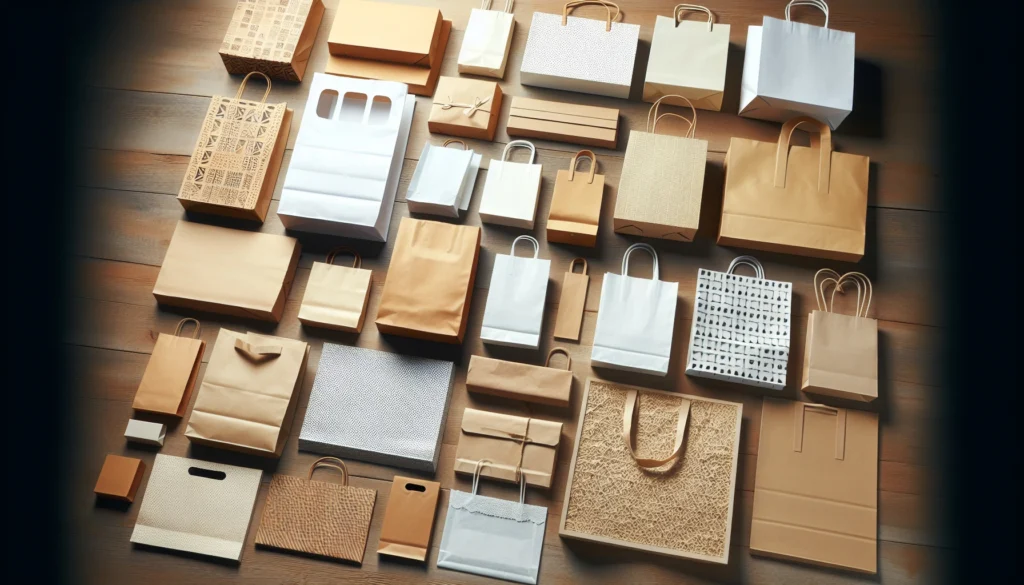In recent years, paper bags have become a popular and environmentally friendly substitute for plastic packaging. Their variety, functionality and aesthetics make them a popular choice for manufacturers and consumers. In this post, we take a closer look at the different types of paper bags, their advantages, disadvantages and applications.
Kraft bags
Advantages and disadvantages of kraft bags
Kraft bags are very popular due to their durability and tear resistance. They are biodegradable and can be easily recycled, making them environmentally friendly. However, their resistance to moisture and grease is limited, which can be considered a disadvantage in some applications.
Different types of kraft paper
Kraft paper is available in different varieties, such as white, brown or natural. Each has specific properties and can be used for a different type of product.
Use of kraft bags in various industries
Kraft bags are used in a wide range of industries, from food to clothing to pharmaceuticals. They are ideal for packaging bulk products, baked goods, clothing and even medicines.
Chalk paper bags
Advantages and disadvantages of chalkboard paper bags
Chalk paper is characterised by its smooth surface, which makes it ideal for high-quality printing. Bags made from this material are often used for luxury packaging. However, the disadvantage can be their lower durability compared to kraft bags.
Printing possibilities on chalkboard paper
Thanks to its smooth surface, chalkboard paper allows for clear and vibrant prints, which is particularly appreciated for premium product packaging.
Using chalk paper bags for luxury packaging
Chalk paper bags are often chosen by luxury brands for packaging of clothing, cosmetics or jewellery, where packaging aesthetics are crucial.
Laminated bags
Types of laminates
Laminating can significantly increase the strength and water resistance of paper bags. There is a distinction between glossy, matt and soft touch laminates, which can further improve the aesthetics of the packaging.
Increasing the strength and water resistance of bags
Laminating makes paper bags more resistant to mechanical damage and moisture, which is particularly important for food products.
Use of laminated bags for food products
Laminated bags are ideal for packaging products that require protection from moisture, such as bread, confectionery or even certain types of cheese.
Printed bags
Printing techniques for paper bags
The most popular printing techniques on paper bags include offset, flexography and screen printing. Each has its own advantages and allows for different visual effects.
Designing striking and personalised prints
Thanks to modern printing techniques, paper bags can become an advertising medium, showcasing company logos, advertising slogans or unique graphic designs.
Printing trends on paper bags
There is a growing interest in bags with original, often personalised prints, which emphasise the individuality of the brand and attract consumer attention.
Bags with handles
Types of handle
Depending on their intended use and aesthetics, paper bags can be fitted with different handle types, such as flat, twisted, made of paper or made of tape.
Choosing the right holder for your application
Choosing the right handle depends on a number of factors, including the weight and type of product being packed, as well as aesthetic preferences.
The impact of the handle on the comfort of the bag
The handle not only affects the appearance of the bag, but also the functionality and comfort of the bag. A well-designed handle can significantly increase the comfort of carrying purchases.
Paper bags, thanks to their diversity, are widely used in many industries. Their ecological nature, recyclability and aesthetics make them an increasingly popular choice for businesses and consumers alike.
